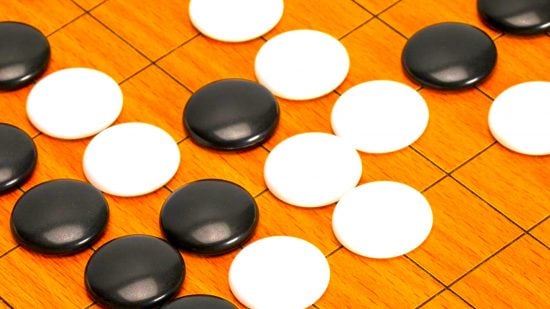
Here are the core Go rules and terminology made simple – basically, everything a beginner board gamer might need to learn how to play Go.

Published: Dec 11, 2023
Gamers have been learning how to play Go for thousands of years, and the strategy game remains a popular pastime. Go is known for its complexity, and two skilled players can keep a game going for hours, but the core Go rules aren’t actually that difficult to pick up. To make things even easier, we’ve put together a beginner’s guide for playing Go.
We’re sure you’re raring to go (pun intended), but before we teach you the rules of this ancient Chinese board game, we’ve got a few more guides to the best board games that may appeal to you. We can point you to the best strategy board games of the modern age, as well as other classic board games that are still worth playing today.
Okay, now let’s go:
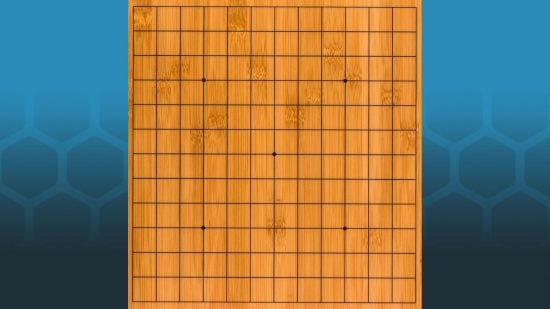
Typically, Go is played on a 19 x 19 grid. Many choose to play on 9 x 9 or 13 x 13 grids, as these lead to shorter and simpler games. But if you want to play Go as intended (or competitively), you’ll want the full 19 x 19 board. Each player takes a pile of stones, either in black or white.
In a traditional game of Go, players also establish compensation points and handicap stones before play begins. These are designed to give less experienced players – as well as players using white stones – a slight advantage.
Compensation points, known as ‘komi’, account for the fact black has a slight advantage by taking the first turn. Japanese and Korean rules say that komi gives white an extra 6.5 points at the start of a game. Meanwhile, Chinese and American rules state komi is worth 7.5 points.
In a handicap game, the stronger opponent plays with white stones. Before play, black stones are placed on the board equal to the difference in player rank (up to nine stones). This represents black’s turn, and white then gets to play their first move.
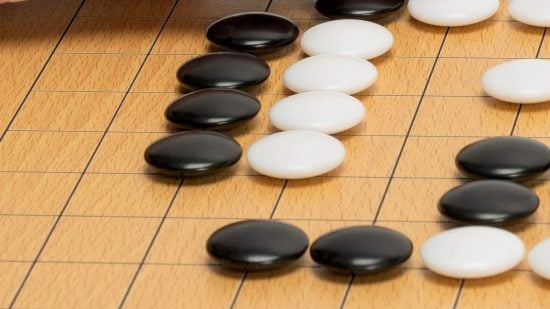
The points on the board where you should place handicap stones will be marked, and there is a specific placement order that should be followed. The video below shows what each of these handicap positions looks like:
To fully understand how to play Go, it helps to know the game’s key terms. Here’s a summary of the basics:
Territory refers to any vacant points that are completely surrounded by stones of the same color. Each point inside a player’s territory is worth one point at the end of the game.
Strings are any number of stones of the same color that are connected to each other. A stone can be added to a string by placing it adjacent to another stone or string of its color – horizontally or vertically, but not diagonally. Several strings in close proximity are known as a group.
A liberty is an empty point that is horizontally or vertically adjacent to a stone or string. To capture an opponent’s stone or string, you must surround it with stones of your color so there are no liberties left. If a string or stone has only one liberty remaining, this is known as ‘atari’.
Strings have more liberties, so they are harder to capture. You also can’t place a stone on any point where your stone would have no liberties (as it would be captured immediately).
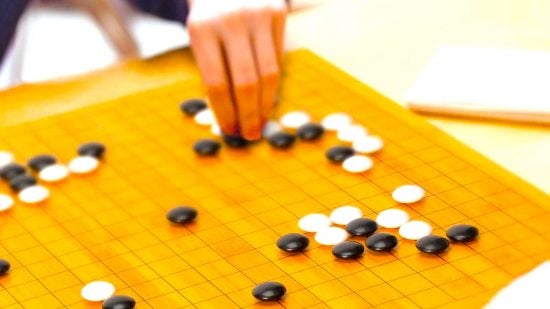
When a stone is surrounded by opposing stones, it is captured. It then becomes a prisoner. The opponent removes the stone they captured from the board and keeps it, as prisoners are worth one point each at the end of the game.
Eyes are liberties that are surrounded by a group of stones. If a group or string has only one eye, it is vulnerable to capture. However, if it has two or more eyes, it becomes impossible to capture, as the opposing player can never cover its last liberty.
For scoring purposes, eyes are considered territory by the player whose colored stones surround them. However, if a group is adjacent to one or more eyes in the opposing player’s group, neither player can count the eyes as territory.
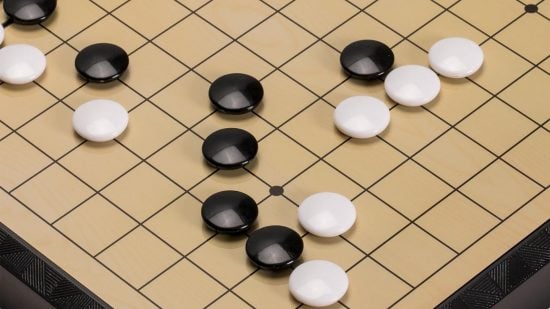
While playing Go can be very complex, its core rules are actually rather simple. Each turn, a player places one of their stones on a point (the corner of a square rather than inside it) on the board.
This placement must follow ‘the rule of liberty’. This means that every stone placed must have at least one liberty or must connect to a group with at least one liberty. Once a stone is placed on the board, it can only be moved if it is captured.
The only other rule you need to know at this stage is the rule of ‘ko’. This means that a stone placed on the board must never repeat the previous positioning of the stones. Essentially, if players can create an indefinite loop of capturing and placing the same stones, ko forces a player to put their stone somewhere else and alter the board in a different way.
When a player feels they can make no more moves, they pass their turn. When both players pass consecutively, the game is over. The player with the most points (from territory, prisoners, and possibly komi) is the winner.
If you’ve had your fill of Go, maybe you’d like to learn how to play chess? And we mean properly, with advice on chess strategy and chess openings.